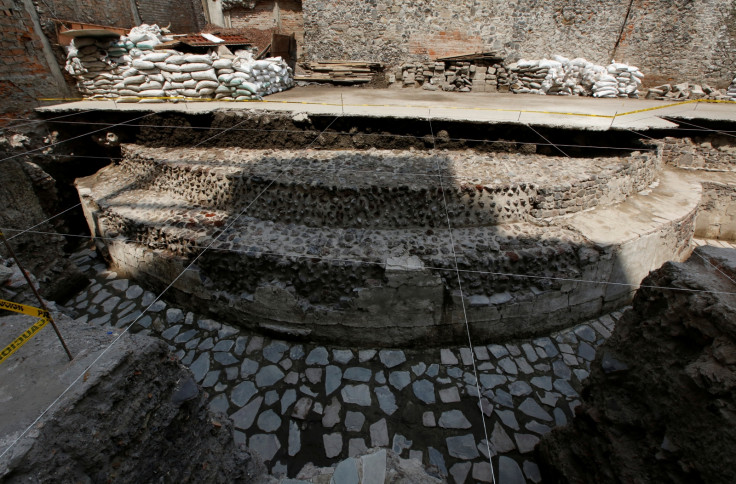Mexico: Severed heads discovered in ancient Aztec ball court where losers were 'ceremonially decapitated'
32 severed male heads were found amongst the remains of an ancient Aztec temple.
Archaeologists have discovered 32 severed male heads amongst the remains of an ancient Aztec temple and a court where a deadly ball game was once played in Mexico City.
Excavations beneath a hotel in the heart of the Mexican capital revealed the foundations of a temple and the remains of a ceremonial court where Aztecs would play the ball game immortalised by Spanish Conquistadors.
The semi-circular temple is said to be dedicated to Ehecatl-Quetzalcoat, the Aztec wind god, with a nearby ball court adjoining the structure, shedding light on sacred spaces enjoyed 500 years ago.
It is believed that the losers of the deadly ball game, referred to by Spanish conquistador Hernan Cortes in 1528, would lose their lives and the dozens of severed male neck bones discovered in a pit next to the court point to this.
Cortes was invited by the last Aztec emperor, Montezuma, to watch the game which, historians believe, involved players using their hips to keep a ball in play.
Raul Barrera, an archaeologist at the site told the Reuters news agency that the deaths were "an offering associated with the ball game" believed to have been played by Aztec warriors.
"There was a small oval-shaped well, within which there were 32 sets of cervical vertebrae - necks from young adults, and there were also children," he said.
"Above them, a series of skull fragments had been ceremonially arranged. Surely, these people were decapitated."

Mexico City sits on part of the ancient Aztec imperial capital, Tenochtitlan, which was once surrounded by a lake, that has now been drained.
Cortes later conquered Montezuma's empire with early Spanish reports suggesting that the Aztec's knew the writing was on the wall when a young Montezuma played against an elderly allied king on the court and lost.
The find was announced on Wednesday (7 June) by archaeologist Eduardo Matos coming from excavations undertaken between 2009 and 2016.

Matos said the top of the temple may have been built to resemble a coiled snake, with priests entering though a doorway constructed to imitate a serpent's nose.
Photos of the dig show the original white stucco remains visible on parts of the sacred temple built between 1486 and 1502, before the 1521 conquest.
"Due to finds like these, we can show actual locations, the positioning and dimensions of each one of the structures first described in the chronicles," said Diego Prieto, head of Mexico's main anthropology and history institute.
Only around half of the area has been excavated because of the buildings above and once excavations are completed a museum has been mooted for the site.

© Copyright IBTimes 2025. All rights reserved.






















